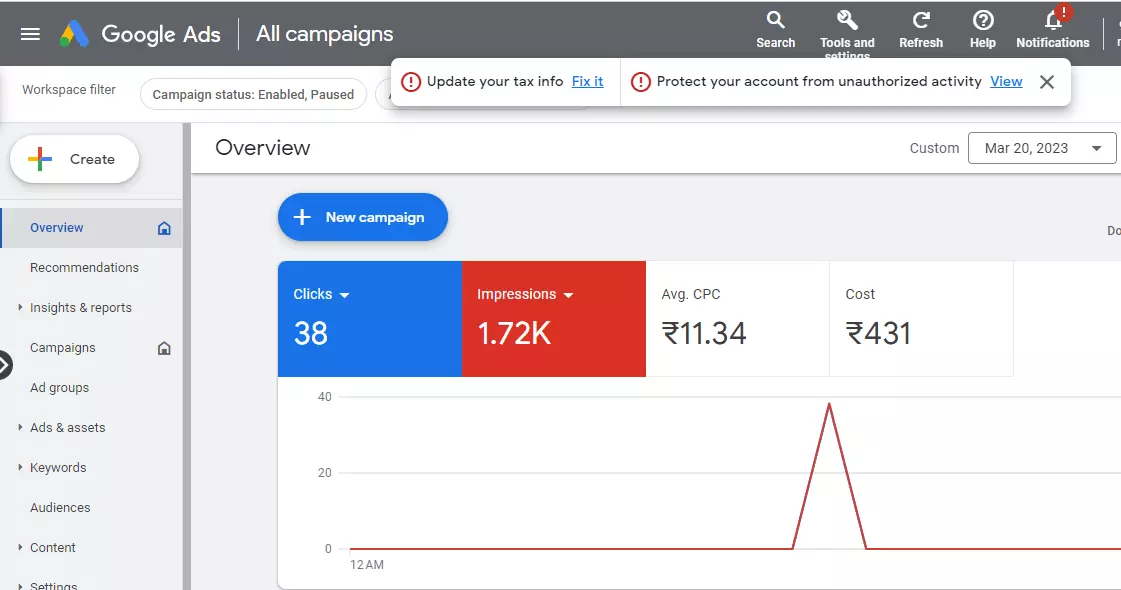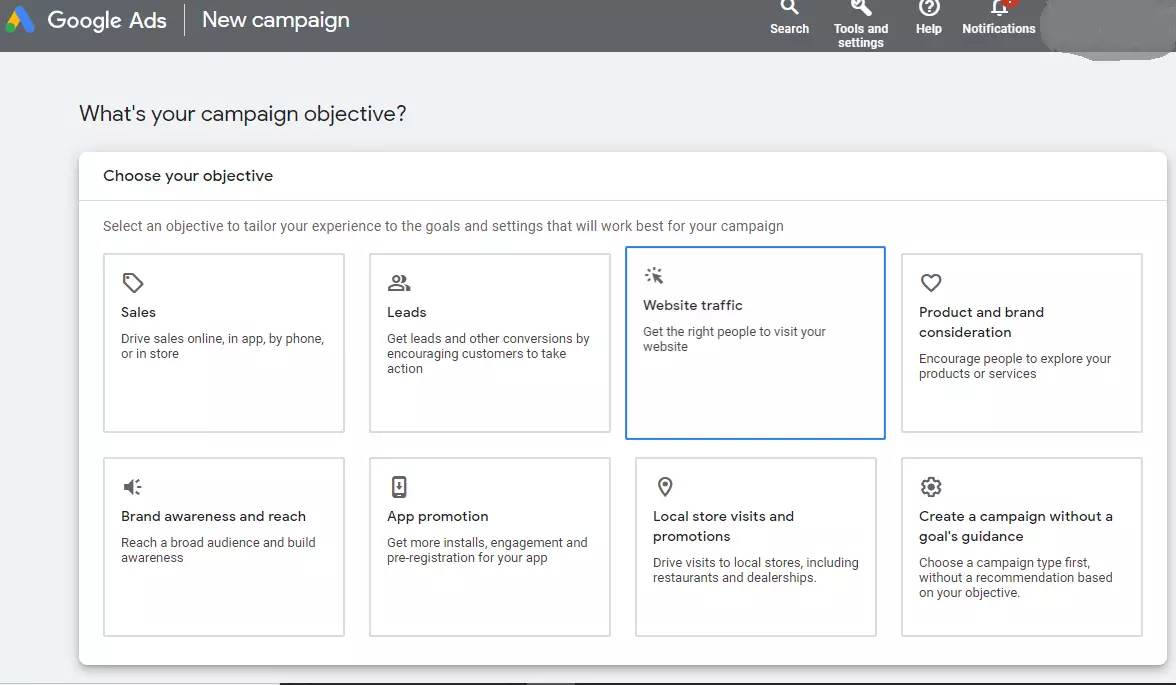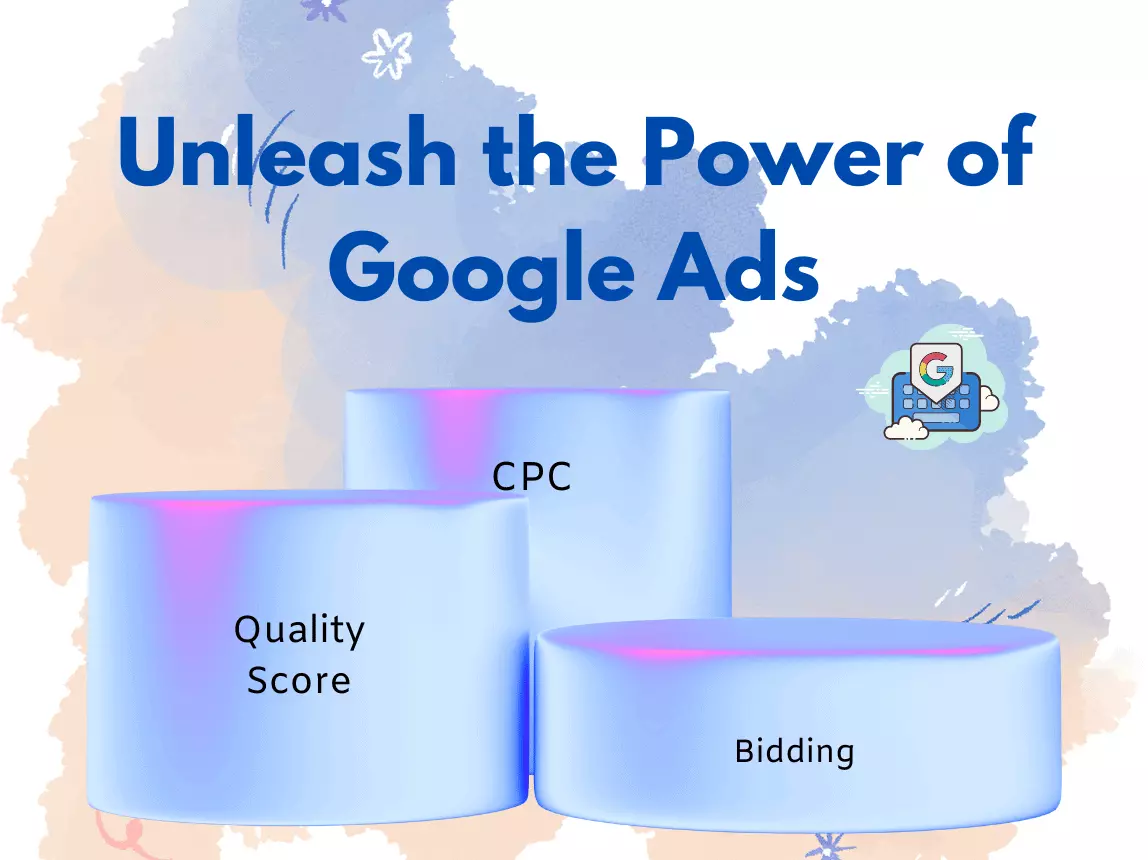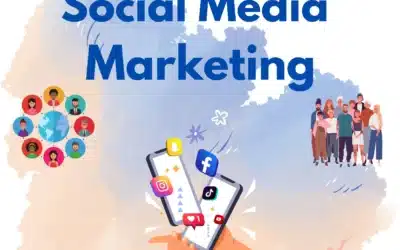Are you ready to unleash the untapped potential of Google Ads?
And Want to witness your business soar to new heights?
Then it’s time to rewrite the rules and Set you up for unrivaled success.
Today, People do not go to google to waste their time.
Unlike Facebook or Instagram where people usually go whenever they are bored and that’s where we show them advertisements.
Even though targeting is very accurate through interests and demographics in Meta networks; you still are reaching those who are going there for entertainment, hence the conversions will be low.
But when people go to Google, they go there to get some answers. They might be searching for information, news products and services.
Therefore, they don’t go to Google without a purpose, which means that the quality of traffic is definitely high there.
And there are billions of queries made on Google every single second, and Google ads are the ones displayed on most search engine results pages(SERP’s).
So you have to believe, that Google ads are an effective way of driving relevant and qualified traffic to your website.
It’s exactly like meeting your customers half way. They are looking for you and you are looking for them.
And that’s how you will get higher conversions and quality because intent is clear and therefore demographics and interests of your audience doesn’t matter in Search ads.
We can sa that it’s the best form of SEM (search engine marketing) out there.
In general we can say that Google Ads Platform is an essential tool for businesses who want to drive targeted traffic to their websites, landing pages and sales page. And In this guide, I’ll show you how to set up and run effective Google Ads campaigns that can help you reach your target audience and achieve your business goals.
And if you do it right (by reading the rest of this guide), you can start generating new sales at the end of this precious hour.
So, come on.
Let’s conquer the google ads and become a Google ad-savvy Hero of this marketing world.
Table of Content:
Understanding Google Ads:
Google Ads is an online advertising platform that allows businesses to create ads that appear in Google’s search results, on other websites, and on YouTube. These ads can target specific audiences based on their search queries, interests, and demographics.
When you start growing a new website, the first place to go is content and SEO which basically helps you to achieve long term goals.
And if you need results right now, you have to go to google ads manager and create a google ads account first.
After then you can access your Ads manger…

Moreover Google ads are performance based. This means that it is a paid advertising platform which is based on Pay-per-Click(PPC) marketing channel which is completely different from other channels like CPM based banner ads where you pay for per thousand impressions.
In google ads you don’t pay for the eyeballs, instead you pay for results.
No results?
No clicks means no leads or sales?
You Don’t pay. It is as simple as that.
The most interesting thing about google ads is that it gives you ideas about money making keywords to use for SEO and Content. Actually it gives you more data than the analytics do.
In simple words it can be defined as a marketplace where companies pay to have their website ranked at the top of a search results page, based on keywords.
This marketplace works as an auction where people bid their money for clicks.To deliver the best user experience this marketplace combines the money factor with quality factor(gonna discuss shortly)
Quality ads + best Bid = maximum wins ?
Use of Google Ads
Google Ads seems to be straight forward but it might be quite difficult so you have to get out of your comfort zone and start running ads with a low daily budget and don’t get lost in the complicated platform interface.
Keep it simple until you get comfortable with the interface and most importantly have patience you will become efficient overtime in it.
Before We get ahead let’s get familiar with some google ads terms. These are:
Google Ads Basic Terms:
- Keywords are words and phrases that users use to search a query on search engines. You have to select keywords for which you want to show your ad.
- Ad Rank determines the placement of your ad on SERPs. Higher the value, higher the chances of your ad to rank on the top. It is determined By the Quality Score multiplied by maximum bid.
- Ad Extensions provide an opportunity to add extra information to your ad without any additional charges. These extensions are grouped into five categories, which are Sitelink, Call, Location, Offer, and more.
- Clicks on your ads are calculated by google and then it charges you money on the basis of it.
- Impressions are the no. of times your ad is shown on search engines, Google also calculates it.
- PPC (Pay per Click) is a popular advertising model where advertisers are charged for each click on their ads. While PPC is not exclusive to Google Ads, it is the most prevalent form of paid campaign used. Take some time to understand how PPC works to make sure your Google Ads campaign goes well.
- Quality Score evaluates the quality of your advertisement based on several factors, including your click-through rate (CTR), the relevance of your keywords, the quality of your landing page, and your previous performance on the search engine results pages (SERPs). Your Quality Score (QS) plays a crucial role in determining your AdRank.
- CTR (Click-through-rate) is defined by the Dividing the clicks with impressions. It is just a percentage of people who visited your advertised page by clicking your ad. It is important because it shows which ads are working well and which are not.
- Bidding & Budget, You have to set your Ad budget and then bids for the amount you are willing to pay for clicks. Your bid has to be maximum to get impressions on search engines.
- CVR (Conversion rate) is the measurement of no. of visitors who get converted through your landing page and visit your thankyou page where you add custom conversions.
- Display network: Google advertisements can appear on two platforms: search results pages or websites that are part of Google’s Display Network (GDN).
GDN consists of various websites that provide ad space on their pages for Google Ads. These ads can be in the form of text or images and are placed in close proximity to content that is relevant to the specific target keywords.
The two most commonly used types of Display Ads are Google Shopping and app campaigns.
Choosing the right campaign type:

Before you set up a Google Ads campaign, it’s important for you to determine the campaign type that best suits your business goals.
You have several campaign types available, including Search, Display, Shopping, Video, and App campaigns.
Getting the most traffic from google should always be your main aim .
For this you need a strong funnel to convert traffic into leads and then leads into sales.
A strong Funnel always needs to be linked, that is Your visitors> Leads> Sales page> Buyers.
Once you have a strong funnel , sales will drive the capital needed for funding the ads.
Make sure you always run conversion optimized Ads. It helps to make your google ads work more efficiently And effectively.
You can Drive a lot of traffic through search campaigns and display networks at a very low cost.
And Use Video And display campaigns for retargeting people who are already in your funnel.( Youtube is the second largest search engine?)
If you think long term you will get a better return on investment, You will get the most traffic at the lowest cost when you run many campaigns with a low daily budget.
Now let’s understand about conversions:
Understanding conversions
It is very important to create right conversion tracking codes to create highly efficient Google ads Campaigns that bring results for a long time.
So create Conversion tracking codes for each stage of your funnel and create an audience from the conversion tracking codes (just like the Facebook pixel).
Set conversions for visitors, leads and sales.
Unlike the facebook pixel, different codes have to be placed in different pages along with Global side tag.
You can do all this tracking without using Google Analytics and you can also use Google tag manager to manage all the codes.
After setting custom conversions you are able to run ads for Custom Audiences.
Creating Custom Audiences
You create audiences from conversion codes that you have created or you can also go ahead and create audiences based on different page views you are getting because you have the google conversion codes on various pages of your website.
Google also has a global site tag in your website by which you can turn whole visitors of your website into a particular audience.
Always use different audiences for different stages of the funnel.
For people who have visited but not opted in, you can run ads to get them to visit the landing page again.
For people who have opted in and seen the sales page but didn’t buy the product, you can run ads to get them to visit the sales page again (apart from using drip campaigns).
This is how you push people throughout the funnel.
Same Custom Conversions and audiences can be used for all types of campaigns.
Just like facebook Pixel audience is more accurate than Interest targeting, Your website visitors and custom audiences in google will be more valuable than keyword targeting.
And having a strong organic SEO & Content marketing strategy helps with paid ads.
Creating a compelling ad:

To create a compelling ad, you need to understand your target audience and their search intent. Your ad should have a clear and concise headline, a well-written description, and a strong call to action.
Make sure your ad is relevant to the keywords you’re targeting and the landing page it’s directing users to.
Creating your first search ad:
For Creating your first search ad you have to come up with 10-15 keywords at least.
Keywords Inside google search ads are usually categorized into:
- Broad match
- Phrase Match
- Exact match
- Broad match modifier
Start with the Broad match Keyword. It is the most simple type of keyword that you will enter.
Example: Learn facebook ads.
Google has its own understanding of how a particular set of keywords are targeted for particular ads.
When you give broad match keywords to google run your ads, you actually give google a lot of freedom that if it thinks a certain keyword is related to your broad match keyword then it shows ads for it.
Just for example, when you target learn facebook ads, google might shows ad for learn Meta ads because it understands that both are the same things.
So you can take keywords from google keyword planner, Ahrefs, Google autosuggest or make an educated guess about what your audience is searching for.
You have to run ads for at least a few days to get the most relevant search terms. And have to enter negative keywords and phrase match keywords to your search campaign.
Then expand your search ads campaigns to display network and create more ad groups and landing pages for different themes which we call optimisation and we will cover later on.
Let’s First talk about creating your first video ad.
Creating your First Video Ad
When you are creating video ads on google, you need to upload your video first on youtube because google doesn’t allow you to upload video on ad set up.
For instance, if people have already provided their names and emails on your landing page, you can create custom audiences through conversion tracking codes. By doing so, you can display these sales videos as Google ads specifically targeted to those individuals who have shown interest in your offerings.
Youtube videos ads can be:
- Youtube Search ads(Appears on Search)
- In-stream Skippable ads( Ads on videos in beginning or in between)
- Bumper ads (short ads which are non skippable)
So go ahead and have a call to action that leads to a landing page or sales page, don’t just ran ads for brand awareness which are not trackable.
Build audiences using your own conversion tracking code, you can also tap into custom affinity audiences to get traffic like that of your competitors.
Do not run youtube ads for branding(unless you are ok with it or unless you have a disposable budget) Track the conversions not just the clicks and leads because once you track conversions you will get predictable ROI by running conversion optimized ads and then only you can treat google ads as an investment rather than ad cost.
Youtube ads work well in partnership with Search and display campaigns, you can use them for retargeting.
Now lt’s time that we discuss about display campaigns…
Creating your first Display ad
Smart display campaigns are the best type of display ads to run.
Earlier display campaigns had specific requirements for ad sizes then it would match with the inventory available across the web.
And there are many problems in it because you might create a square banner but there are a lot of sites where your audience visits might not have square space to show your ad.
That’s why Google came up with smart display campaigns.
Now you can add images, text and logos and google will automatically create ads of different sizes for you.(you can also use stock images.)
Smart Display Campaigns only work when you have your conversion setup. Do not run smart campaigns just for impressions and clicks.
Google will automatically do the bidding for your ads, you do not need to adjust anything.
Google will automatically set the targeting for your ads , you do not define any audience or keywords. Just make sure your daily budget is 10x of your target CPA.
These ads are on complete automation.
Setting up the right bidding strategy:

Bidding is an essential part of running a successful Google Ads campaign.
There are several bidding Methods available, these are manual bidding, automated bidding and enhanced CPC bidding.
It’s important to choose the bidding strategy that aligns with your business goals and budget.
And I’m here to spill the beans on the exciting world of bidding strategies in Google Ads.
So, listen up and get ready to become bidding experts!
First off, bidding strategies are like secret weapons that determine how we spend our advertising budget.
Let me tell you about a few cool strategies we can use:
-
Manual CPC (Cost-Per-Click):
Imagine having the power to set your own bids for keywords or ad groups. With manual CPC, you become the boss of your bids and can adjust them whenever you want.
-
Target CPA (Cost-Per-Acquisition):
This strategy is super smart! You set a goal for how much you want to spend on each customer action, like a purchase or sign-up. Google Ads then uses its magic to optimize your bids and help you reach that goal.
-
Target ROAS (Return on Ad Spend):
Who doesn’t want to get the most bang for their buck? With target ROAS, you set a goal for how much revenue you want to make from your ads. Google Ads uses it smartly to adjust your bids and maximize your return on investment.
-
Enhanced CPC:
This strategy is like having a little helper who knows which clicks are more likely to turn into actual customers. It uses fancy machine learning to automatically adjust your bids and increase your chances of getting those valuable conversions.
-
Maximize Conversions:
Imagine being able to get the most conversions possible within your budget. That’s exactly what this strategy does! Google Ads does all the hard work, adjusting your bids to get you as many conversions as possible.
-
Maximize Clicks:
If your goal is to drive as much traffic to your website as possible, this strategy is your go-to. It optimizes your bids to get the maximum number of clicks within your budget. More clicks, more visitors!
Now you know some of the bidding strategies used by Google Ads superheroes like me. But remember, the best strategy for you will depend on your goals and budget. Keep an eye on your performance and be ready to make adjustments along the way.
Google ads optimization:
Once you set up your first ad then you need to go ahead and track your campaigns on a daily basis.
So do not make the decisions with a small amount of data. Let the law of large numbers Work.
Try to remove the negative keyword by checking search terms for which your ad is triggered.
You can create a new targeted ad group based on search terms. Have one phrase match and exact match keyword in each of your ad groups.
See if any campaign is driving clicks but not conversions, Try to audit your funnel. Check the landing page.
Because once in a while your landing page might break or wouldn’t redirect to the thank you page.

So You have to audit your funnel to check the landing pages, confirmation email deliverability because if you use broken funnels in your campaigns then you might end up wasting money on ad spends.
And in your bidding strategy, always maximize conversion rates instead of target CPA . Google will decide the CPC based on historical data of ads in your account.
That is something what you can do when you plan your campaigns for long term and can afford to burnout a little bit budget in beginning to let google optimize the ads
And do not run your ads for brand awareness, because you can not track it and might end up wasting up your marketing budget.
Now let’s look at creationof landing pages that converts well…
Creating effective landing pages that Work:
Your landing page is the first point of contact with your potential customers.
It’s important to make sure it’s well-designed, optimized for conversions, and relevant to the ad you’re running.
Make sure your landing page has a clear call-to-action, relevant information, and a user-friendly design.
When you run a google ad, do not drive traffic to a page where you have a corporate website or A generic e-commerce store.
Never run any ad campaign to the home page ever. The conversion rate will be low because there are too many links around and it is not focused on a single call to action.
Make sure to send traffic to a targeted high-converting landing page.
The best kind of landing pages to use with ads are Lead Pages and Sales Pages.
For a Brand new audience always use lead pages so that you can capture people’s email ids and build your own list and tribe.
For an audience that is already in your email list, drive traffic to a landing page where you have the product for sale. (Click here to know more about leads, sales, and landing pages)
A consistent stream for your product will help you fund your ad campaigns and eventually it helps you to increase impressions on your ad.
Tracking and analyzing your results:
Tracking and analyzing your results is crucial to optimizing your Google Ads campaigns.
Use Google Analytics to monitor your ad performance, track your conversions, and identify areas for improvement.
Imagine you’re a detective and you’ve just stumbled upon a magical tool called Google Analytics.
It’s like having your own superpower to track and analyze important information about your ads.
Let me show you how this awesome tool can help us improve our ads and make them super successful!
When we integrate our ads with Google Analytics, we can unlock a treasure chest of metrics.
These metrics are like clues that give us insights into how our ads are performing and how we can make them even better. It’s like having a secret decoder that reveals all the hidden secrets of our advertising campaigns.
Use this data to adjust your campaigns, targeting, and bidding strategies to achieve better results.
One of the first things we can discover is the popularity of our web pages. We can see which pages are getting the most attention and love from our visitors.
But that’s not all! We can also uncover the secret keywords that drive the most traffic to our website. Keywords are like magic words that connect our ads to the right people.
By understanding which keywords are working like magic, we can sprinkle them in our ads to attract even more visitors.
It’s like having a secret code that unlocks the door to success!
Now, here comes the really exciting part – we get to dive deep into the world of engagement.
We can find out how long people stay on our website, whether they explore other pages, and if they take the actions we want them to take.
It’s like watching a thrilling movie and seeing how the audience reacts to every twist and turn.
If we notice that people are leaving too quickly, we can work our magic and make our website more captivating to keep them hooked!

As we continue our detective work, we can spot trends and opportunities that can boost our advertising success.
We can see which ads are performing the best and which ones might need a little makeover. It’s like being a superhero with the ability to transform our ads into something extraordinary?
So by using Google Analytics, we become the ultimate detectives of advertising.
We track important metrics, discover popular web pages, uncover secret keywords, and analyze engagement data.
Armed with this knowledge, we can optimize our ads, attract more visitors, and achieve super-duper advertising success!
Conclusion:
Running successful Google Ads campaigns requires a combination of strategic planning, creativity, and data analysis.
With this knowledge, You can create ads that truly stand out from the crowd.
And make Google analytics your magical map to guide you on the advertising journey of Google ads.
In your Beginning journey Spend at least 500 rupees and get familiar with the interface of the ad manager.
Remember, my friends, the world of advertising is full of wonders and possibilities.
Unlock the power of google ads and make it your investment rather than Ad spend.
So Are you ready to become an ad-savvy hero?
Join the conversation below In comments and share your thoughts and isues on this exciting journey!
Cheers,
Manthan “ Google ad-Savvy Hero” Sharma






Thanks for sharing this helpful resource! I’ve bookmarked it for future reference.
Thank you for sharing your insights. I completely concur with your points and value your clarity on the subject.